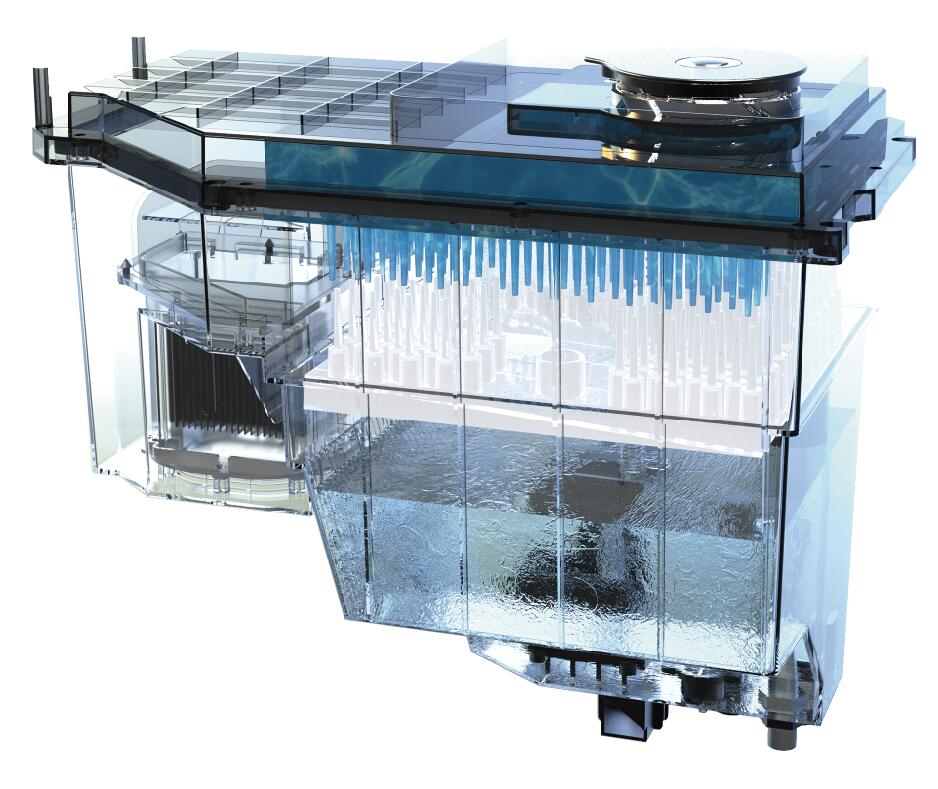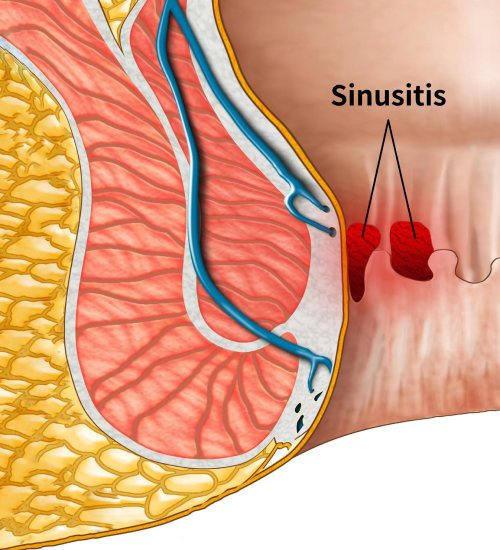Continuous positive airway pressure (CPAP) therapy can be effective in treating sleep apnea, but some people may not feel better when first starting treatment. There are many reasons for this, some of which are transient and will ease over time. Others may require an adjustment of treatment to help you feel better.
CPAP, a machine that uses mild air pressure to keep your airways open while you sleep, is sometimes known to cause insomnia, discomfort, and even weight gain (referred to as "CPAP belly"). Fortunately, most of these will resolve as treatment is fine-tuned and your body adapts to therapy. Daytime Apnea

This article explains why you may not feel better after starting CPAP therapy and ways to help better cope as you adjust to treatment.
Excessive daytime sleepiness is a common symptom of untreated sleep apnea. However, not everyone has this symptom and many wonder why they should go through the hassle of CPAP if they don't feel any difference.
This is especially true for people with mild sleep apnea (defined as having between five and 14 breathing interruptions per night). At this level, many people have little, if any, daytime sleepiness and score low on the Epworth sleepiness scale—meaning they don't need treatment for daytime sleepiness.
But that doesn't mean that they don't need treatment for sleep apnea.
If left untreated, mild sleep apnea is likely to progress over time and become worse. This, in turn, can increase your risk of long-term complications, such as diabetes, heart disease, or stroke.
Even over the short term, CPAP can benefit people with mild sleep apnea, in part because they may not realize how much the condition affects them and consider their current state as being "normal." It is only after treatment that they may realize that their "normal" was not normal.
According to a 2020 study in Lancet Respiratory Medicine, people treated with CPAP had better vitality scores—a subjective measurement of one's health, wellness, and energy—than those who were not. At the end of the three-month trial period, those treated with CPAP had a vitality score of 7.5 out of a possible 10 compared to 1.5 for those who were not treated.
It can be hard to adjust to CPAP therapy. You may want to remove your mask, especially as it gets closer to the morning. The problem with this is that sleep apnea often gets worse as morning approaches.
Rapid eye movement (REM) sleep mostly occurs in the last third of the nightly sleep cycle. During this stage, the soft tissues in your throat, such as the tongue and soft palate, will temporarily relax. When this happens, your airways will narrow or collapse, cutting your breathing off momentarily.
In order to reap the benefits of CPAP, you need to commit to wearing the mask from bedtime right up until the time when you awaken in the morning.
Using a CPAP machine is not without its challenges. Some people may struggle with the fit of the CPAP mask which, if not properly sized, can leak or cause marks, pain, sores, or ulcers on the face. Others may find breathing against the air pressure difficult.
To better overcome this, work with your healthcare provider to find the mask best suited for your face. You can try other options, including nasal pillows, nasal masks, and full-face masks.
You can also inquire about CPAP machines with a "ramp" feature that allows you to start at low air pressure and gradually increase as you fall asleep.
Insomnia, a condition in which you have trouble falling or staying asleep, is a common symptom of sleep apnea.
If you have insomnia prior to undergoing CPAP therapy, the very notion of putting on a mask for a machine that blows air in your face may not sound like a remedy that would help.
However, it is important to remember that the main reason for insomnia in people with sleep apnea is that the stoppage of breathing often awakens them, sometimes multiple times a night. With perseverance, CPAP can help reduce this and allow you to get a full night's rest.
If your insomnia seems to be getting worse with CPAP, ask your healthcare provider about sleep aids or ways to improve your sleep hygiene. There are also therapists trained in cognitive behavioral therapy for insomnia (CBTI) who can help.
You may not get the full benefit of treatment if your CPAP settings are incorrect. These settings regulate the pressure of air delivered to your mask.
If the setting is too high, you may struggle to exhale and find yourself waking in the middle of the night. If the setting is too low, you might continue to have frequent breathing gaps and wake up in the morning feeling tired.
Finding the right setting can take trial and error. One way to get there faster is to check the nightly apnea-hypopnea index (AHI) report on your machine. The AHI report will tell you how many breathing interruptions you had per night.
Ideally, you would aim for less than five per hour. If it is more than this, the CPAP setting may need to be increased. If you find yourself struggling against the air pressure, the setting may need to be decreased.
Do this with your healthcare provider, however, who will want to adjust the setting based on other factors, such as changes in your blood oxygen.
In the past, CPAP was thought to lead to weight loss. Recent studies suggest that may not be the case and that people often gain weight, particularly around this midsection. Many people call this "CPAP belly."
There are some theories as to why this occurs. It is thought by some that when you have sleep apnea, your body burns up a lot of energy as you struggle to breathe. When your breathing improves with CPAP, you burn fewer resting calories and can start to gain weight.
In such cases, an improved diet and routine exercise can mitigate the risk. Exercise is especially beneficial for people with sleep apnea, increasing the tone of the upper airways and reducing the accumulation of fluid in the neck that can contribute to airway collapse.
At the same time, CPAP can cause you to swallow air if the setting is too high, leading to bloating and abdominal distention. Adjusting the machine to a lower setting may prevent this and reduce the appearance of a bulging belly.
In some people, CPAP therapy can lead to a condition known as complex sleep apnea (CSA). This occurs when the brain "forgets" to tell the respiratory muscles to make you breathe. CSA is a type of central sleep apnea in which the brain is the cause of the breathing gaps as opposed to obstructive sleep apnea in which the airways physically collapse.
The exact cause of CSA is unknown. With that said, central apnea is more common in people who live in high altitudes. It is possible, therefore, that a high air pressure setting on your CPAP machine may contribute to CSA symptoms. In such cases, lowering the CPAP settings can help.
Fortunately, CSA resolves in 98% of people with continued treatment, although this can take several months.
The amount of time it takes for CPAP therapy to work differs from one person to the next. If sleep apnea is severe prior to treatment, the improvement may be more obvious. On the other hand, when the symptoms are mild, it may take longer to notice any changes.
Keep in mind that it can take several weeks before you feel the impact of CPAP therapy. Perseverance, support, and regular contact with your healthcare provider will help you cope with the transition. In time, you may not only feel the benefits of CPAP but see the benefits on your AHI report and with improved blood pressure readings.
If you are not noticing any improvement, speak with your sleep specialist about ways to adjust your therapy to work better for you.
If you are using CPAP therapy but still feel tired, there could be several reasons why. It's possible that you haven't been doing the therapy for long enough, you are removing your mask during the night, your pressure needs to be adjusted, or your symptoms are mild.
It may take several weeks of proper and continuous usage before you feel the results of CPAP therapy. If you haven't noticed any changes, be sure to speak with your doctor. There is a chance they may diagnose you with another underlying medical condition or complex sleep apnea. In these cases, other treatment methods may be used.
Speak with your doctor. They may determine that you need a different type or size mask, or that you have another condition that may require additional treatment.
Other ways to manage sleep apnea may include:
Research suggests that if you're moderately obese, shedding 10% of your weight may relieve your symptoms by up to 50%. Losing more weight may reverse sleep apnea altogether.
Dempsey JA, Veasey SC, Morgan BJ, O'Donnell CP. Pathophysiology of sleep apnea. Physiol Rev. 2010;90(1):47-112. doi:10.1152/physrev.00043.2008
Malhotra A, Ayappa I, Ayas N, et al. Metrics of sleep apnea severity: beyond the apnea-hypopnea index. Sleep. 2021 Jul 9;44(7):zsab030. doi: 10.1093/sleep/zsab030
Abbasi A, Gupta SS, Sabharwal N, et al.A comprehensive review of obstructive sleep apnea.Sleep Sci.2021 Apr-Jun;14(2):142–154.doi:10.5935/1984-0063.20200056
Wimms AJ, Kelly JL, Turnbull CD, et al. Continuous positive airway pressure versus standard care for the treatment of people with mild obstructive sleep apnoea (MERGE): a multicentre, randomised controlled trial. Lancet Respir Med. 2020;8(4):349-358 . doi:10.1016/S2213-2600(19)30402-3
Virk JS, Kotecha B. When continuous positive airway pressure (CPAP) fails. J Thorac Dis. 2016;8(10):E1112-E1121. doi:10.21037/jtd.2016.09.67
Gomase VG, Deshmukh P, Lekurwale VY. Obstructive sleep apnea and its management: a narrative review. Cureus. 2023 Apr;15(4):e37359. doi:10.7759/cureus.37359
Rathore FA, Ahmad F, Zahoor MU. Case report of a pressure ulcer occurring over the nasal bridge due to a non-invasive ventilation facial mask. Cureus. 2016;8(10):e813. doi:10.7759/cureus.813
Ong JC, Crawford MR. Insomnia and obstructive sleep apnea. Sleep Med Clin. 2013;8(3):389-398. doi:10.1016/j.jsmc.2013.04.004
Koffel EA, Koffel JB, Gehrman PR. A meta-analysis of group cognitive behavioral therapy for insomnia. Sleep Med Rev. 2015;19:6-16. doi:10.1016/j.smrv.2014.05.001
Wahab NA, Ahmed YN. Optimal level of continuous positive airway pressure: auto-CPAP titration versus predictive formulas. Egyptian Journal of Chest Diseases and Tuberculosis. 2017;66(2):353-361. doi:10.1016/j.ejcdt.2016.11.004
Quan SF, Budhiraja R, Clarke DP. Impact of treatment with continuous positive airway pressure (CPAP) on weight in obstructive sleep apnea. J Clin Sleep Med. 2013 Oct 15;9(10):989–993. doi:10.5664/jcsm.3064
Dias de Andrade FM, Pedrosa RP. The role of physical exercise in obstructive sleep apnea. J Bras Pneumol. 2016 Nov-Dec;42(6):457–464. doi:10.1590/S1806-37562016000000156
Shepherd K, Hillman D, Eastwood P. Symptoms of aerophagia are common in patients on continuous positive airway pressure therapy and are related to the presence of nighttime gastroesophageal reflux. J Clin Sleep Med. 2013;9(1):13–17. doi:10.5664/jcsm.2328
Wang J, Wang Y, Feng J, Chen BY, Cao J. Complex sleep apnea syndrome. Patient Prefer Adherence. 2013;7:633-641. doi:10.2147/PPA.S46626
Muza RT. Central sleep apnoea—a clinical review. J Thorac Dis. 2015;7(5):930-937. doi:10.3978/j.issn.2072-1439.2015.04.45
Wang J, Wang Y, Feng J, Chen BY, Cao J. Complex sleep apnea syndrome. Patient Prefer Adherence. 2013;7:633-641. doi:10.2147/PPA.S46626
Martinez-Garcia MA, Capote F, Campos-Rodriguez F, et l. Effect of CPAP on blood pressure in patients with obstructive sleep apnea and resistant hypertension: the HIPARCO randomized clinical trial. JAMA. 2013;310(22):2407-2415. doi:10.1001/jama.2013.281250
Harvard Health. I can't tolerate CPAP, what can I do? July 29, 2020.
Harvard Health. Weight loss, breathing devices still best for treating obstructive sleep apnea.
By Brandon Peters, MD Brandon Peters, MD, is a board-certified neurologist and sleep medicine specialist.
Thank you, {{form.email}}, for signing up.
There was an error. Please try again.

Daytime Apnea By clicking “Accept All Cookies”, you agree to the storing of cookies on your device to enhance site navigation, analyze site usage, and assist in our marketing efforts.